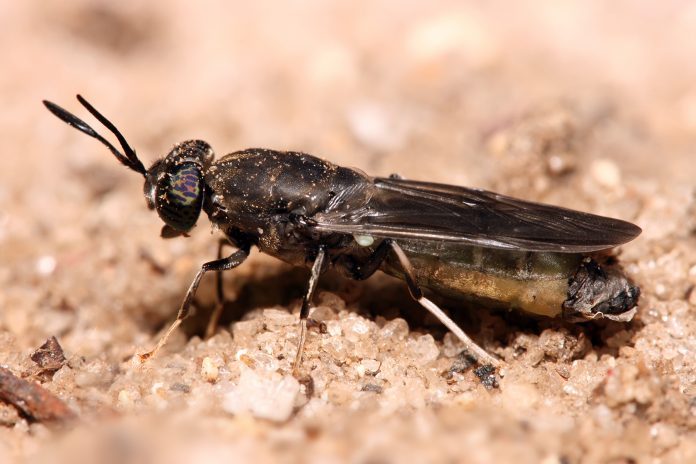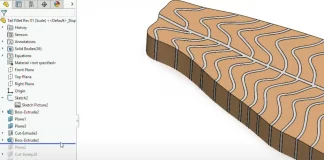The Skretting factory at Averøy, Norway has for the first time produced commercial salmon feed with insect flour. Nordlaks is the first customer to test this in a commercial scale, and 360,000 fry will receive feed containing the product.
“We expect it to be as good as normal feed and hope that the commercial test will show the same good results as Skretting has seen in its efforts,” said Eirik Welde, director of Nordlaks Smolt.
Insect flour is an alternative to fishmeal and soya, and Siri Tømmerås, responsible for feed for land-based farming in Skretting, refers to experiments where the fish grows as well with insect flour as with traditional protein sources.
“Insect is an important food for the wild salmon, and we see that insects can increase the appetite for the fish. This is an interesting find, and we continue to take advantage of this,” said Tømmerås.
Solved quality challenges with insect producers
Skretting believes insect feed will be an important raw material in the future and has chosen to help the current producers with industrialisation. Skretting says that they have the knowledge of this and have chosen to do so because they have the belief that insect flour as an important protein source.
“The challenge has been to find manufacturers that can produce enough volume with consistent, good quality. We have seen more than thirty manufacturers, and ended up with a handful of suppliers that we have moved on. After a close cooperation for a long time, we have now obtained the raw material at a quality level that we can count on in the future,” said Tømmerås.

Sustainability
“It is important for us to try out new ingredients to document everything from the rise to fish welfare at the salmon. Feed materials are on the agenda when Nordlaks meets European customers, and we generally experience that they want such a development and especially when they understand that this is a good commodity where there is no doubt about sustainability, “Welde said.
This feed contains insects from larvae of black soldier fly which is an EU-approved commodity.
“Insects are natural and good for wild salmon, and insects in salmon is very sustainable. We must get this story out,” said Siri Tømmerås in Skretting.
Investigations and feedback from European consumers show that they may become skeptical of insects fish feed. If consumers, on the other hand, know that this is natural and sustainable food for the salmon, they are far more positive.
“Not everyone who has grown up near a salmon river and knows that insects are good and natural food for the salmon. When we tell it, consumers are more positive to eating salmon that has been given insects,” added Tømmerås.
Industrial production of insects must be increased
In the European market, there is currently little available insect feed for use on a large scale, and Skretting assists manufacturers who wish to come up at a commercial level. The feed manufacturer has a goal that by 2022, at least five different European suppliers, will produce 20,000 years of insect flour. That is, two thirds of the amount of soybean concentrate Skretting uses today.
“Our goal is that the future of aquaculture is not harvested by food used for human consumption. Then it’s important to invest in alternatives like insect feed,” said Mads Martinsen, Skretting Norway’s Product Development Director, who has several new commodity projects in progress.
“Insect meal seems to taste good for the salmon, which in nature is used to insects. We are also testing the plankton calanus (a species of copepods and a part of zooplankton) which is a natural part of the wild salmon’s diet. Then we go further down the food chain, and in fact, the Nordic waters have as much calanus as the total biomass of all wild fish and sea mammals combined. The authorities have opened for a regulated fishing, and Skretting is already starting commercial trials with calanus. We see that the salmon likes the taste of this plankton, so here we have a fantastic new resource in addition to insect flour,” added Martinsen.











